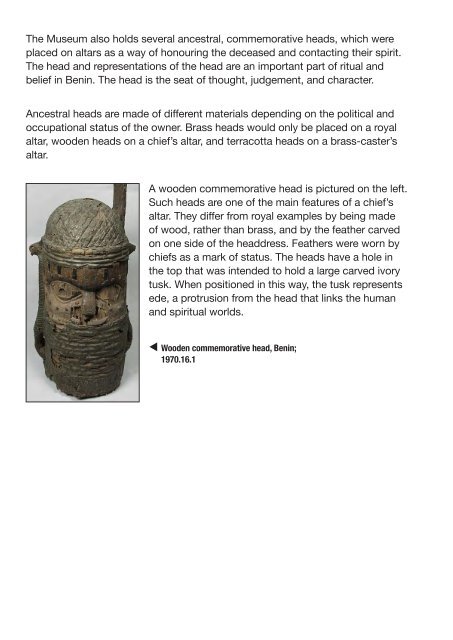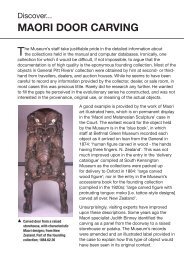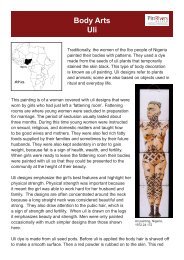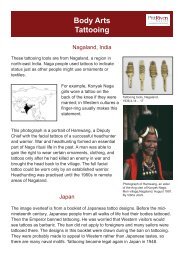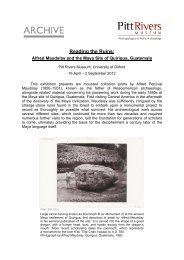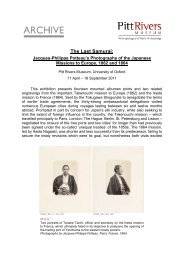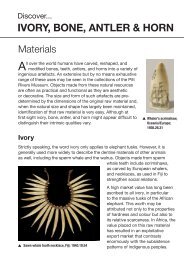COURT ART OF BENIN - Pitt Rivers Museum
COURT ART OF BENIN - Pitt Rivers Museum
COURT ART OF BENIN - Pitt Rivers Museum
Create successful ePaper yourself
Turn your PDF publications into a flip-book with our unique Google optimized e-Paper software.
The <strong>Museum</strong> also holds several ancestral, commemorative heads, which were<br />
placed on altars as a way of honouring the deceased and contacting their spirit.<br />
The head and representations of the head are an important part of ritual and<br />
belief in Benin. The head is the seat of thought, judgement, and character.<br />
Ancestral heads are made of different materials depending on the political and<br />
occupational status of the owner. Brass heads would only be placed on a royal<br />
altar, wooden heads on a chief’s altar, and terracotta heads on a brass-caster’s<br />
altar.<br />
A wooden commemorative head is pictured on the left.<br />
Such heads are one of the main features of a chief’s<br />
altar. They differ from royal examples by being made<br />
of wood, rather than brass, and by the feather carved<br />
on one side of the headdress. Feathers were worn by<br />
chiefs as a mark of status. The heads have a hole in<br />
the top that was intended to hold a large carved ivory<br />
tusk. When positioned in this way, the tusk represents<br />
ede, a protrusion from the head that links the human<br />
and spiritual worlds.<br />
Wooden commemorative head, Benin;<br />
1970.16.1


